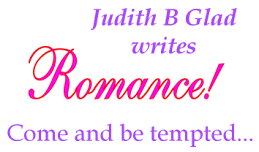Writers cheat. They write about places they've never been,
using maps, photographs, travelers' accounts, Google Earth and tour books to
help them set the stage on which their characters play out the stories.
Well, actually, that's not cheating. It's really difficult
to visit first century Gaul or fourteenth century China or Regency England in
person. We have to depend upon contemporary accounts, like Marco Polo's Book
of the Marvels of the World,
Caesar's Commentaries on the Gallic
Wars, Jane Austen's
superb novels, upon archaeological
studies, historical accounts, diaries, and a whole bunch of other sources. We
are simply decorating the stages on which our characters act, and we do our
best to get it right.
I had never been to Florence, Italy, when I wrote FlorentineEnchantment, or to London and
Paris when I wrote Undercover Cavaliere. I relied a lot on photos on the
Web, on maps and, in the latter case, also on an 1881 Baedeker, which showed me
how to get my characters from London to Paris and where they could stay when
they got there.
The great thing about writing historical fiction is that as long as you
stick to documentable facts, no one can argue, because they weren't there
either. The awful thing about writing historical fiction is that you can't make
up your own maps of well-known places, or put important structures where they
weren't, or change the path of a river. As sure as you do, someone is going to
come along and say--publically and probably very loudly--"Hey, you've got
that wrong!"
Fortunately, the Piazza della Signoria in Florence hasn't changed much
since 1817, at least not so far as I could discover. Yes, the original David
was moved indoors when they noticed how much air pollution was damaging it, but
there's a good replica in the same place. Since the story requires that
particular sculpture in that exact location, I was safe. But still, there was a
niggle of doubt. Had I got it right? Did I have the Piazza right? So high on my
list when I finally made it to Florence was checking the piazza where the
replica David stands. To my delight, it looked exactly like my mental
image.
How about the narrow Parisian streets around Gare du Est? I never got
any chiding letters from readers, but I still worried. When I finally got to
Paris a couple of years ago, I spent an afternoon visiting some of the places
where I'd set scenes. It was a great relief to see that I hadn't made any
really awful errors.
But still... I wasn't in Paris in 1885, in London or
Florence during the Regency Period, in Cheyenne, Wyoming in 1872, or in any of
those other places where I've set stories. I'm eternally grateful to libraries
(both public and historical), to all the people who've worked to put old
magazines and journals online, to contribute to places like Project Gutenberg
whence old books can be downloaded, to the Library of Congress for making old
maps available. These and many other sources are available to writers who want
to make sure their scenes are convincing, the sets upon which their characters
act out their stories are authentic to the time.
So I guess we writers don't really cheat. We research,
imagine, create, describe, and hope we've done so convincingly. And we have a
really good time doing it.
Traditionally I ended my newsletters with a recipe, and when
a good one comes along, I'll continue doing that. A while back I ran across a
simple and delicious way to use zucchini, something available in surplus this
time of the year. Best thing about it is that it's a good last-minute addition
to a meal, and it also works nicely with other summer squash.
Zucchini
Slaw
2 cu (more or less) Zucchini, julienned
(you can also use a coarse grater)
2-3 scallions, julienned (or thin-sliced sweet onions)
1 red pepper or carrot, julienned
1/2 cu white vinegar
1/2 cu sugar
2 tsp sea salt
1 tsp fresh ground pepper
Poppy seeds (optional)
2-3 scallions, julienned (or thin-sliced sweet onions)
1 red pepper or carrot, julienned
1/2 cu white vinegar
1/2 cu sugar
2 tsp sea salt
1 tsp fresh ground pepper
Poppy seeds (optional)
Toss thoroughly, and serve within about 15
minutes.
Comments welcome. I'd love to hear from you.
Jude

